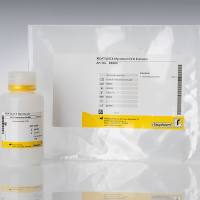Gas Liquid Chromatography (GLC) has been used to separate a few mycotoxin types: trichothecenes, zearalenone, patulin, and
anthraquinones (1
–9
). In contrast, most of the known mycotoxins are amenable to high performance liquid chromatographic (HPLC) separation (10
). Accordingly, Frisvad and Thrane developed a general reversed-phase HPLC analysis procedure for simultaneous separation
and detection of 182 mycotoxins and other fungal metabolites (10
). This very versatile approach involved the temporal spectroscopic (UV) detection of the chromatographically separated mycotoxins.
However, some recently identified mycotoxin classes, (fumonisins and AAL toxins) although amenable to HPLC separation, lack
the UV chromophores required for detection using this method. For these toxins, HPLC analysis is most easily accomplished
using another approach for the detection step. Electrospray ionization (ES) mass spectrometry (MS) is well suited for mycotoxin
analysis, especially for the larger, less volatile toxins not amenable to gas chromatography (GC) and particularly for those
like the fumonisins and AAL toxins lacking strong UV chromophores. Moreover ES is an ionization method developed in response
to the need for direct MS characterization of HPLC separated components.






